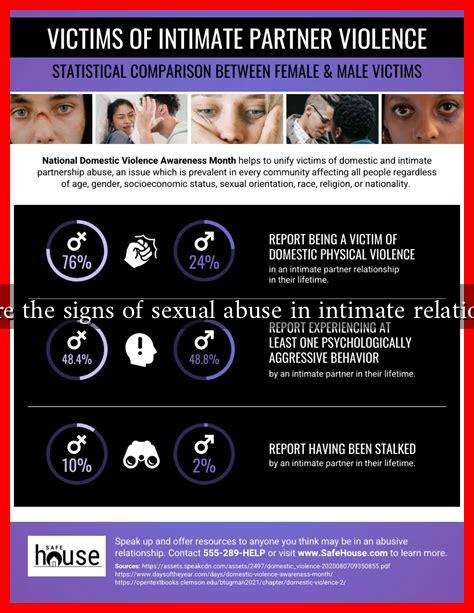-
Table of Contents
What are the Signs of Sexual Abuse in Intimate Relationships?
Sexual abuse in intimate relationships is a pervasive issue that often goes unrecognized or unreported. It can take many forms, from coercive sexual acts to emotional manipulation, and its signs can be subtle or overt. Understanding these signs is crucial for victims, friends, and family members to identify and address the problem effectively. This article explores the various indicators of sexual abuse in intimate relationships, providing valuable insights and resources for those affected.
Understanding Sexual Abuse in Intimate Relationships
Sexual abuse is defined as any unwanted sexual contact or behavior that occurs without consent. In intimate relationships, this can manifest in various ways, including physical violence, emotional manipulation, and coercion. According to the National Domestic Violence Hotline, approximately 1 in 4 women and 1 in 9 men experience severe intimate partner physical violence, which often includes sexual abuse.
Common Signs of Sexual Abuse
Recognizing the signs of sexual abuse is the first step toward intervention and support. Here are some common indicators:
- Physical Signs: Unexplained injuries, bruises, or signs of trauma in the genital area can indicate sexual abuse.
- Emotional Changes: Victims may exhibit sudden changes in mood, such as increased anxiety, depression, or withdrawal from social activities.
- Fear of Intimacy: A partner may show reluctance or fear towards physical intimacy, which can be a sign of past trauma.
- Manipulative Behavior: One partner may use guilt, shame, or threats to coerce the other into sexual acts.
- Substance Abuse: Increased use of drugs or alcohol can be a coping mechanism for victims dealing with trauma.
Case Studies and Real-Life Examples
Understanding the signs of sexual abuse can be further illustrated through real-life examples. Consider the case of Jane, a 28-year-old woman who began to withdraw from her friends and family after entering a new relationship. Her partner often belittled her and used emotional manipulation to control her actions. Over time, Jane experienced physical signs of distress, such as unexplained bruises and anxiety attacks. It wasn’t until a close friend recognized these signs and encouraged her to seek help that Jane began to understand the nature of her situation.
Another example is that of Mark, a 35-year-old man who felt pressured into sexual acts by his partner. He often felt guilty for not wanting to engage in certain activities, leading to feelings of shame and isolation. Mark’s experience highlights that sexual abuse can affect individuals of any gender, and the signs may not always be visible.
Statistics on Sexual Abuse in Relationships
Statistics can provide a clearer picture of the prevalence of sexual abuse in intimate relationships:
- According to the Centers for Disease Control and Prevention (CDC), nearly 1 in 5 women and 1 in 71 men have been raped at some point in their lives.
- The National Intimate Partner and Sexual Violence Survey (NISVS) reports that 1 in 3 women and 1 in 4 men have experienced some form of physical violence by an intimate partner.
- Research indicates that sexual abuse is often underreported, with many victims fearing stigma or disbelief.
Resources for Victims and Supporters
If you or someone you know is experiencing sexual abuse, it is essential to seek help. Here are some resources:
- RAINN (Rape, Abuse & Incest National Network) – Provides support and resources for survivors of sexual violence.
- National Domestic Violence Hotline – Offers 24/7 support for individuals experiencing domestic violence.
- National Sexual Violence Resource Center – Provides information and resources on sexual violence prevention and response.
Conclusion
Recognizing the signs of sexual abuse in intimate relationships is vital for prevention and intervention. By understanding the physical, emotional, and behavioral indicators, individuals can take proactive steps to address the issue. Whether you are a victim or a supporter, knowing where to seek help can make a significant difference. Remember, no one deserves to experience abuse, and there are resources available to help navigate these challenging situations.

